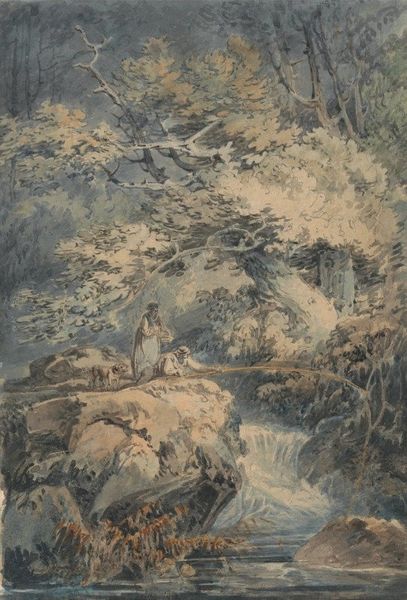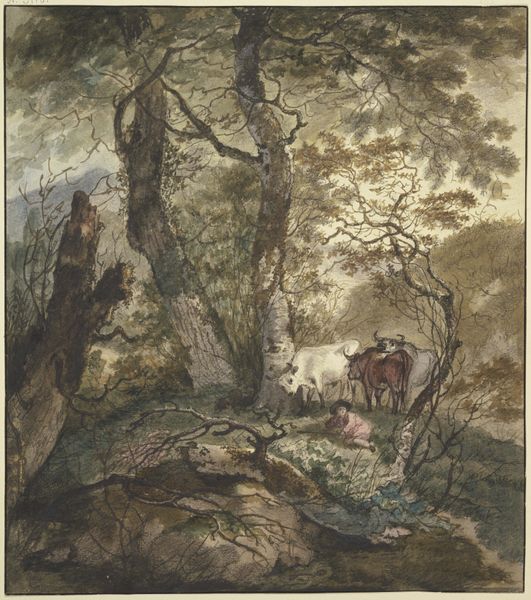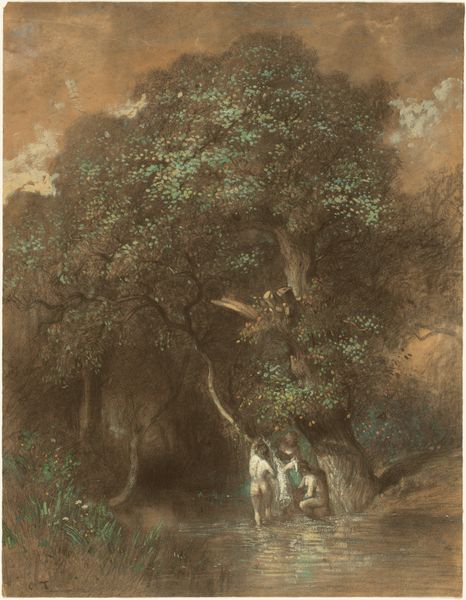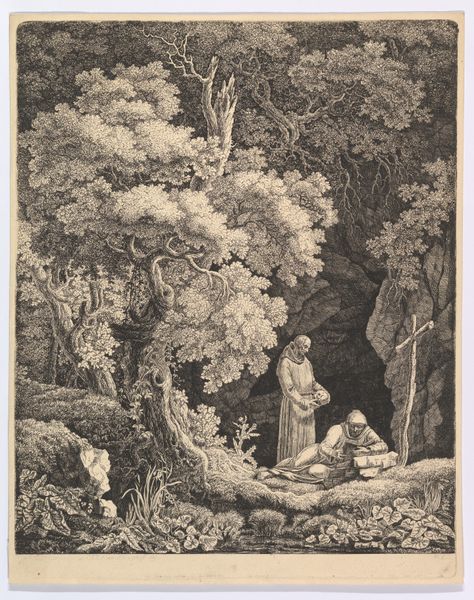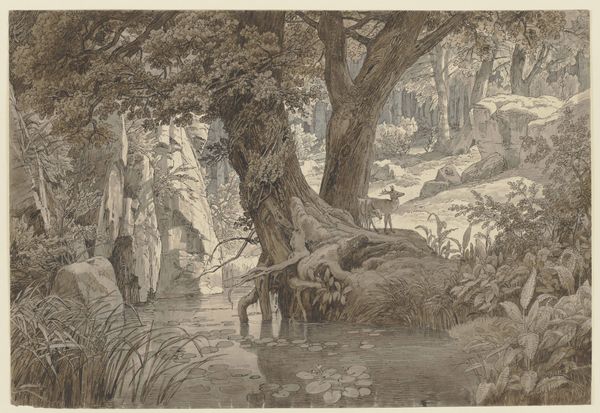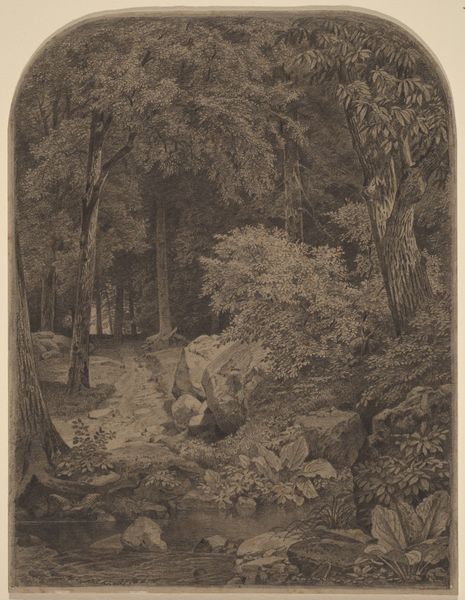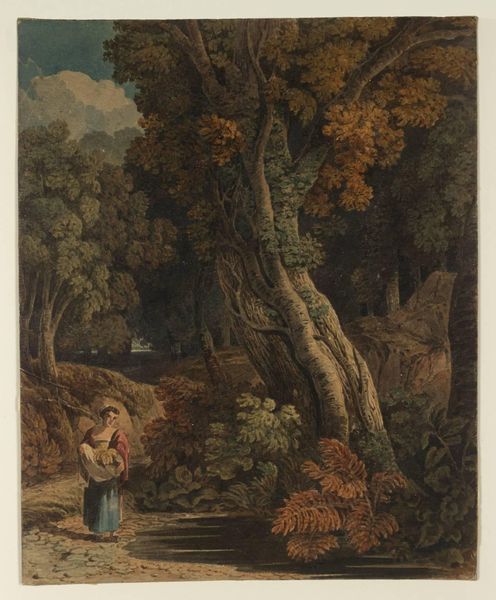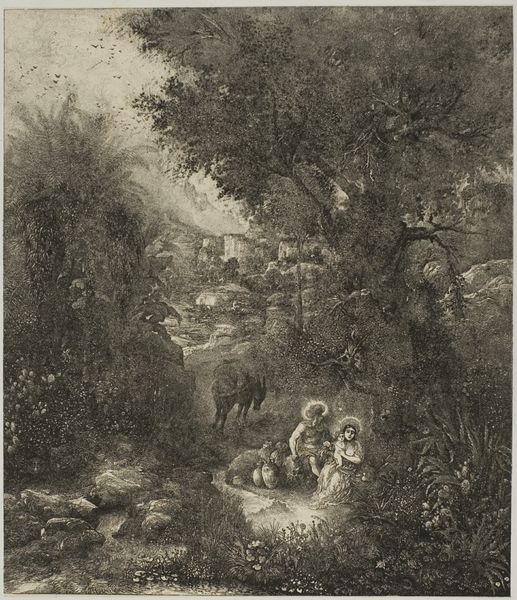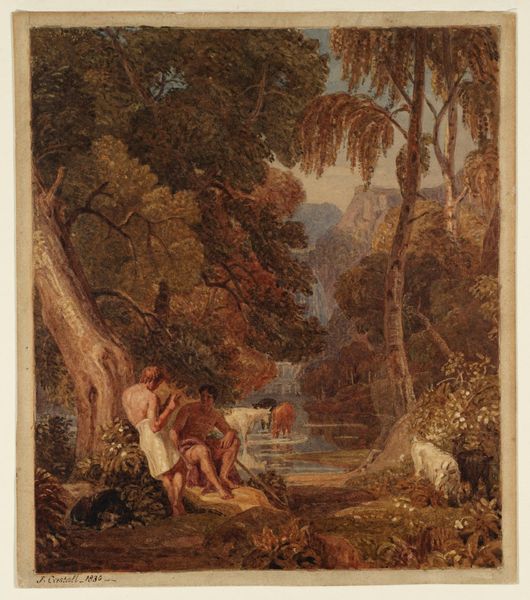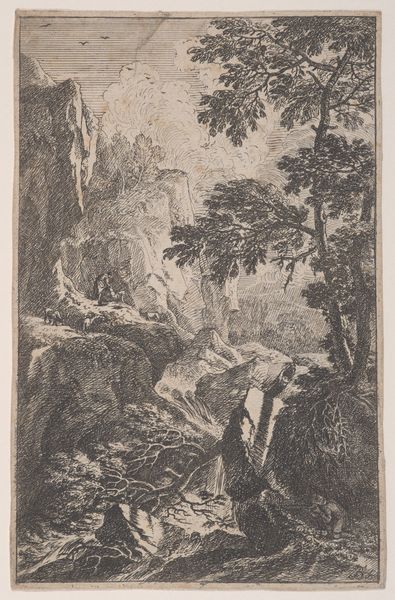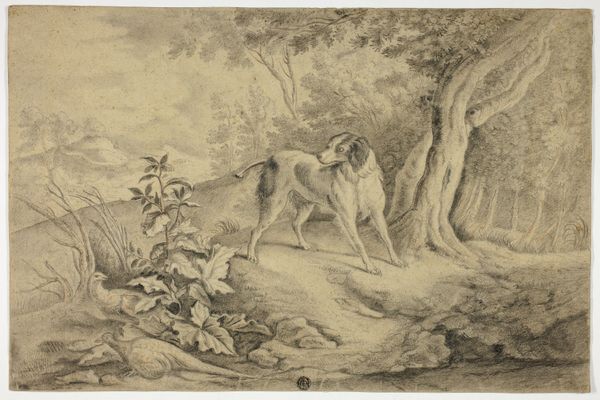
drawing, print, gouache, watercolor
#
gouache
#
drawing
#
fairy-painting
# print
#
gouache
#
landscape
#
bird
#
figuration
#
watercolor
#
child
#
forest
#
watercolour illustration
#
natural palette
#
watercolor
Dimensions: 12 1/4 x 7 1/4 in. (31.1 x 18.4 cm)
Copyright: Public Domain
Curator: Before us is Adrian Ludwig Richter’s watercolor and gouache drawing titled "Genoveva," created in 1872. It's part of the collection here at the Metropolitan Museum of Art. Editor: It’s undeniably enchanting. The ethereal light filtering through the trees creates a secluded, almost dreamlike space. It's a very carefully balanced composition. Curator: The work depicts a scene from the life of Saint Genevieve of Brabant, a popular subject in 19th-century German Romanticism. The legend tells of an innocent woman wrongly accused of infidelity, who was banished to the wilderness with her son. Editor: Note Richter’s delicate handling of watercolor. The translucent washes create depth, particularly in the layering of foliage. There's a symbolic harmony established using subtle modulations of tone rather than strident contrasts of light. The composition really emphasizes the relationship between this woman and nature. Curator: Precisely. Consider the pervasive themes of exile, injustice, and the redemptive power of nature, resonating deeply with the sociopolitical climate of the time. Genevieve's plight serves as a critique of patriarchal structures and unjust accusations, a trope common in women's narratives. It reminds me of the stories around Héloïse. Editor: Certainly, one could argue for those contextual echoes. However, my attention keeps returning to the artist’s careful attention to detail. The varied textures, from the rough bark of the trees to the soft fur of the deer. The semiotic of it reads with ease and precision. Curator: This detail humanizes her, contrasting with her initial forced isolation from society to a new kinship within her surroundings and their ecosystem. Editor: Yes, it speaks to Romanticism's tendency of an inward gaze onto subjective and emotional themes through landscape and figurative study. Looking closely, this artwork becomes an act of appreciation for the quiet technical skill exhibited by Richter, more than any social statement. Curator: I agree the detail is important and showcases technical artistry, but for me it's the themes of resilience and social critique embedded in "Genoveva" that allow it to resonate with audiences and encourage dialogues surrounding female victimhood. It is these connections that solidify its enduring place within larger historical dialogues. Editor: Perhaps our viewpoints, like Richter's composition, find their value precisely in these diverse readings, creating a richer perspective of this enchanting world.
Comments
No comments
Be the first to comment and join the conversation on the ultimate creative platform.
